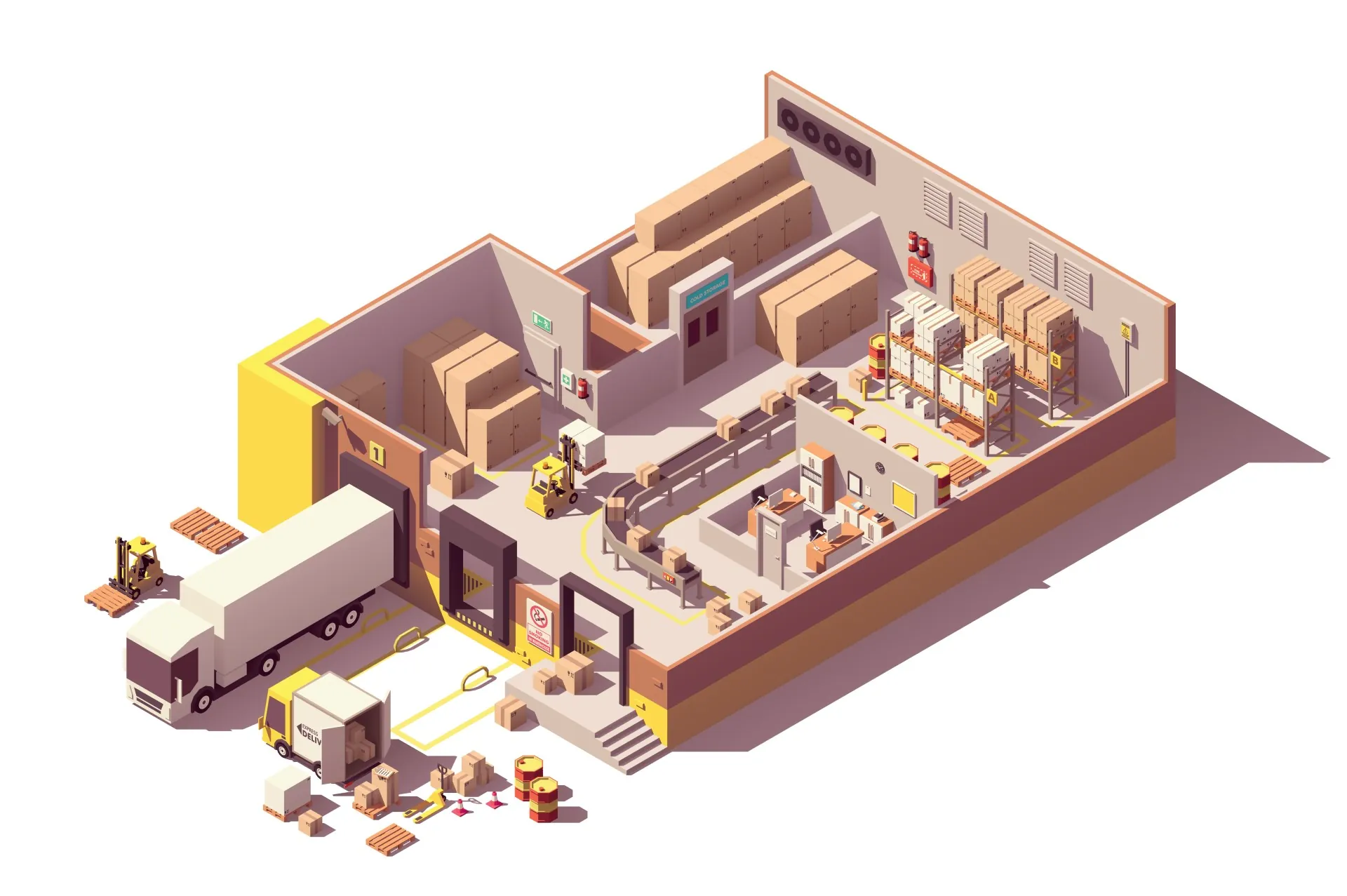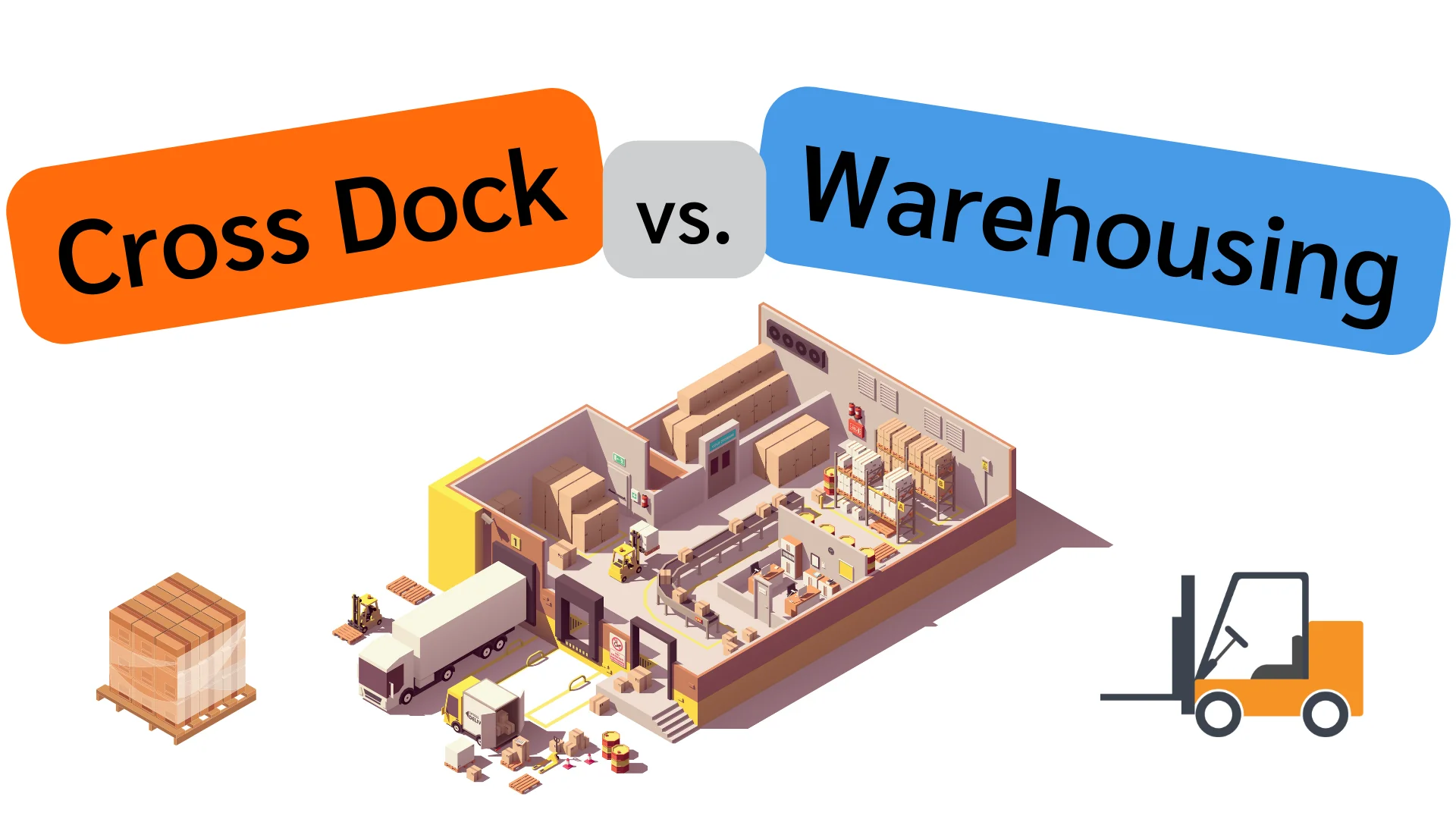
What’s the Difference Between a Cross Dock and Warehousing?
The supply chain involves a complex process of interconnected moving parts that often overlap. Products make multiple stops as they move toward their final destination. This complexity can be especially challenging when different products must go in different directions.
This is why sorting, processing, and distribution facilities are crucial to the supply chain. They gather all the products being shipped, group them together, and send them to retailers and customers.
The supply chain relies on two main types of these facilities: warehouses and cross docks. Both have roles within the logistics industry, but what sets them apart, and which is the best choice for shipping your products?
What is Warehousing?
A warehouse is a facility that stores goods before they are distributed to retailers or customers. Warehouses act as large storage units, service providers, and sometimes fulfillment centers, ensuring a smooth flow of products from manufacturers to retailers and, ultimately, customers.
Goods are transported into warehouses by trucks, ships, trains, or airplanes and sorted and categorized based on product type, size, and quantity. They are then stored in the warehouse until a customer places an order.
Once an order is received, the products are removed from storage, packed into trailers, and shipped to a fulfillment center for packaging and labeling. They can also be sent directly to the retailer or customer from the warehouse.
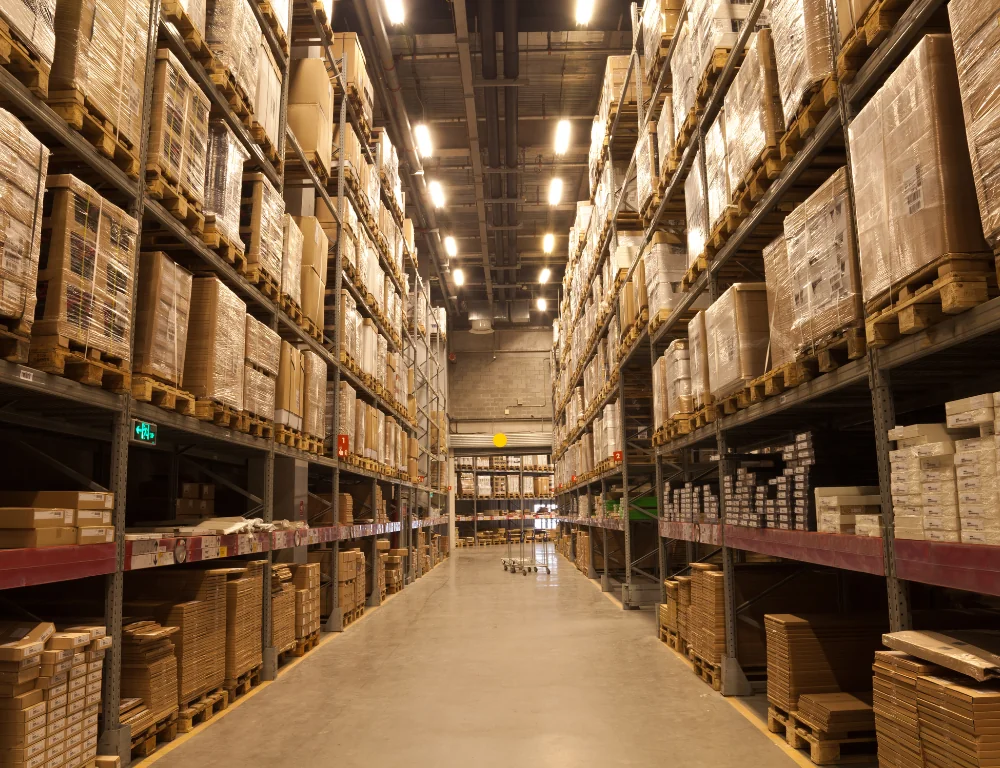
Warehouses have multiple functions they perform, including:
- Receiving
- Categorizing
- Storing
- Tracking inventory levels
- Picking
- Fulfilling orders
- Shipping goods
Sometimes, a warehouse also functions as a fulfillment center, packaging, labeling, customizing, and assembling business orders before shipping them to retailers and customers. Not all warehouses do this, but quite a few do to condense business operations.
Warehousing keeps supply chain operations running smoothly for businesses and the economy in general:
- They are a secure storage location, keeping freight in good condition until order fulfillment takes the items away.
- They act as a hub for inventory management and product availability monitoring.
- They function efficiently in order fulfillment, ensuring quick retrieval and dispatch of products to prevent delays.
- Businesses also use warehouses as strategic points for expansion; they will place warehouses near suppliers and markets of interest to decrease transportation costs.
What is a Cross Dock?
Cross docks are facilities where goods are sorted and then immediately shipped out. These places are not storage areas; they are essentially fast-paced distribution centers that go in and out quickly to continue toward their destination.
At a cross-dock, goods arrive as they do at a warehouse. However, the goods are consolidated with other products heading to similar locations. The items are packed into a different trailer waiting on the other side of the dock and shipped out.
There are two types of cross docks: pre-distribution and post-distribution cross docks. Pre-distribution docks know their customers, so the items are quickly unloaded, sorted, and reloaded onto a different trailer for distribution. Post-distribution docks don’t know their customers yet, so the items are temporarily stored (though not as long as a warehouse) until a customer is identified. Businesses take this opportunity to refine their sales forecasts and determine product shipments based on in-store inventory and point-of-sale trends.

Dock crossing has changed the status quo in the supply chain in several ways:
- They reduce inventory costs since there isn’t as much warehousing needed.
- Delivery times are exponentially improved since items are quickly shuffled and shipped out without much delay.
- They eliminate the need for manual product handling. Dock workers only need pallet jacks and forklifts, ensuring greater accuracy in transporting products to their destinations.
- They are better for sustainability efforts because cross docks reduce the number of required shipments and emissions from transportation vehicles.
What Are The Differences and Similarities Between Warehousing and Cross Docking?
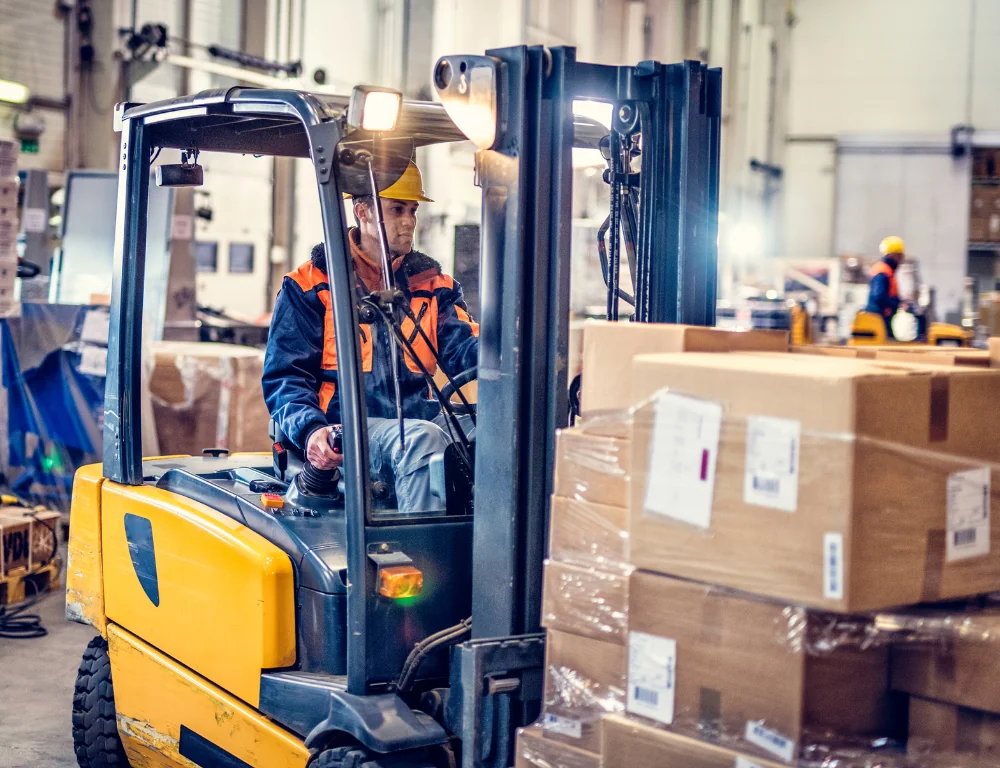
While they function differently, warehouses and cross docks have a few similarities between them:
1. Both are facilities that sort goods into groups.
2. They utilize essential tools like forklifts and pallet jacks to handle products.
3. They both are responsive to unexpected changes and events.
4. Both have key roles within the supply chain, efficiently streamlining the transportation process.
However, there are several major differences between them as well:
1. Warehouses store goods before distribution; cross docks transfer goods directly to outbound trailers.
2. Warehouses are storage and fulfillment centers; cross docks do not store goods since they go straight to distribution.
3. Warehouses sort goods into similar groups based on product type, size, and quantity but then pick them out individually for distribution; cross docks sort items heading to similar destinations and pack them into outbound trailers.
4. Warehouses usually store non-perishable goods; cross docks handle perishable items like food and medicine. However, some may also handle non-perishables depending on the product and the need for speedy deliveries.
5. Warehousing has high inventory costs; cross docking has reduced costs.
6. Warehouses directly handle goods; cross docks indirectly handle products using pallet jacks and forklifts.
7. Warehouses, while quick, have slower processing and delivery times than cross docks.
8. Warehouses have higher security than cross docks since the latter has goods pass through quickly through the facility.
Which Should You Use, Warehousing or Cross Docking?
Understanding the differences between warehouses and cross docks is crucial for optimizing supply chain logistics. Warehouses offer extensive storage solutions and play a critical role in inventory management, ensuring that products are readily available for distribution. Their multifaceted operations make them indispensable for long-term storage and handling of goods.
Conversely, cross docks enhance efficiency and reduce costs by minimizing storage time and speeding up the distribution process, making them ideal for perishable items and time-sensitive shipments.
Ultimately, the choice between warehousing and cross-docking depends on your business’s specific supply chain needs. Warehouses are optimal for businesses requiring secure, long-term storage and comprehensive order fulfillment. Meanwhile, cross-docking offers a more suitable solution for those seeking to streamline distribution, reduce inventory costs, and expedite delivery.
Both facilities’ unique advantages are vital to maintaining a resilient and efficient supply chain, ensuring that products reach their destinations swiftly and securely.
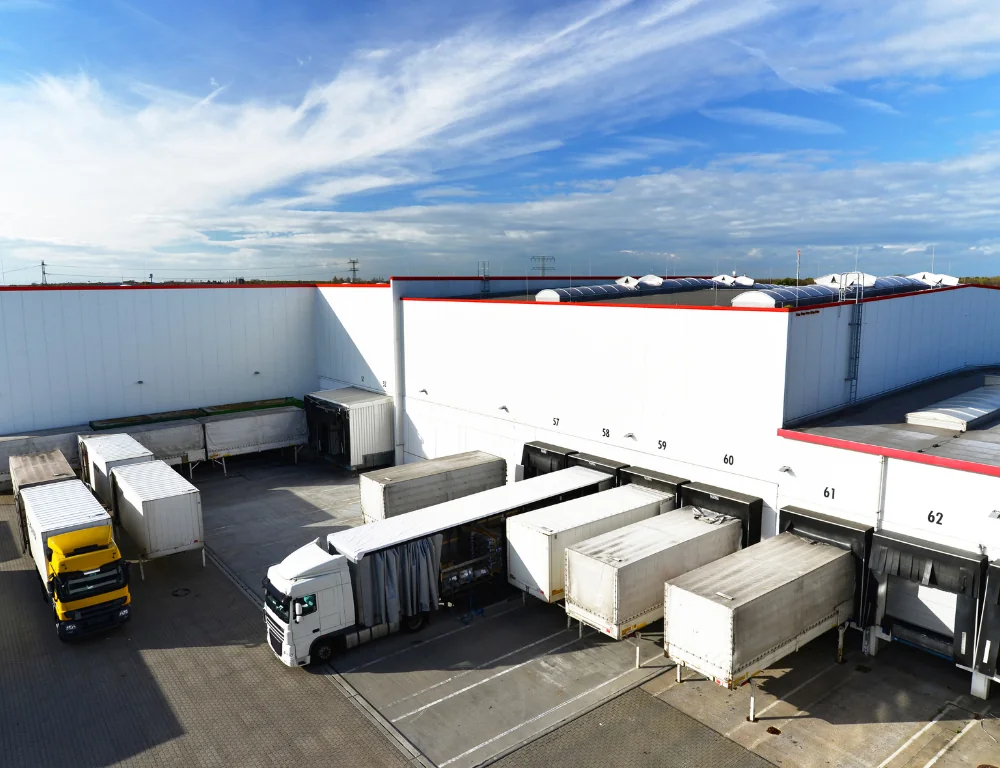
Are you booking a shipment and want to learn more about warehousing and cross docking? Ask your FreightCenter agent! We’ll review the two types of facilities and discover how your business can benefit from utilizing these in your business objectives. Try our free online quote tool, or call (800) 716-7608 to start shipping with us!

